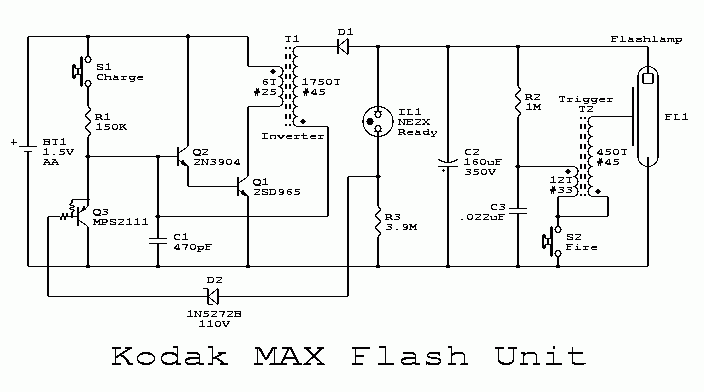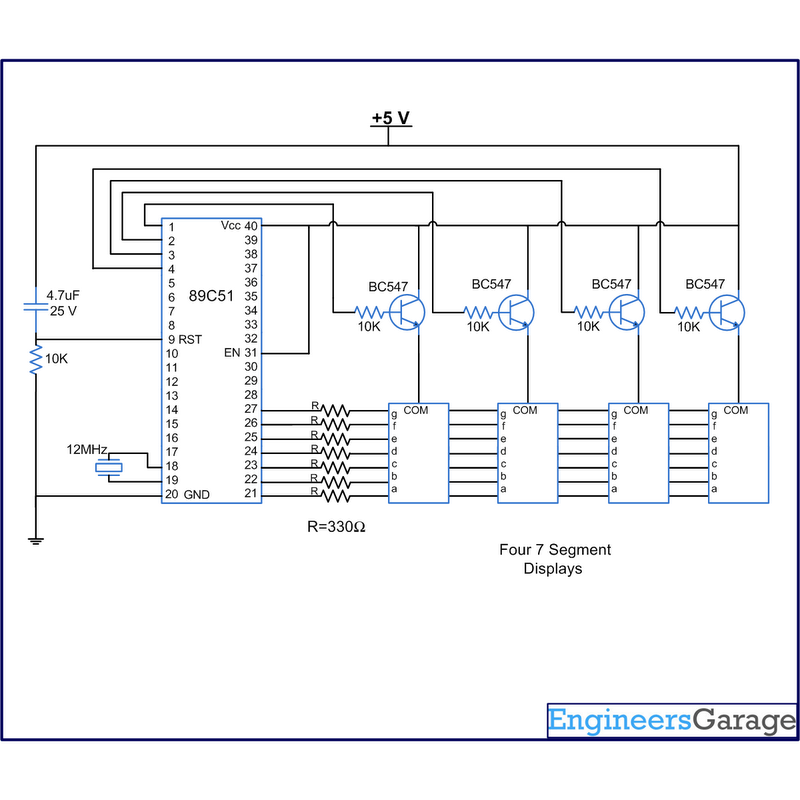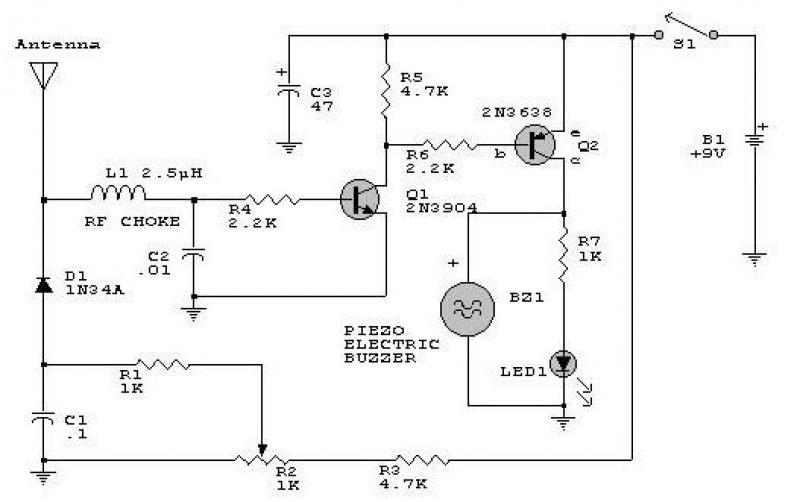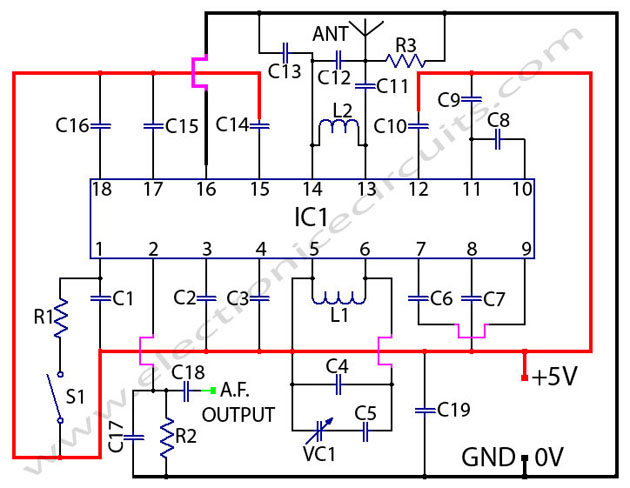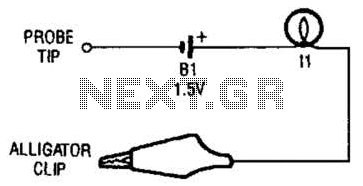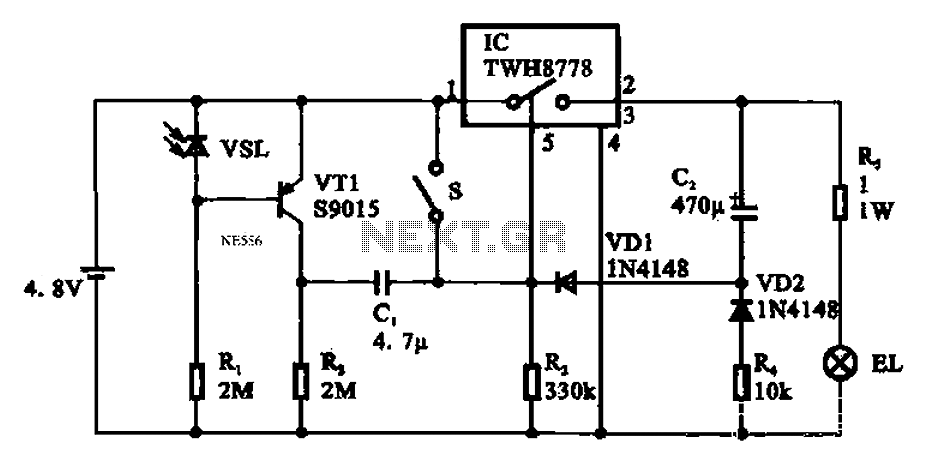
Fm Light-Beam Transmitter Circuit
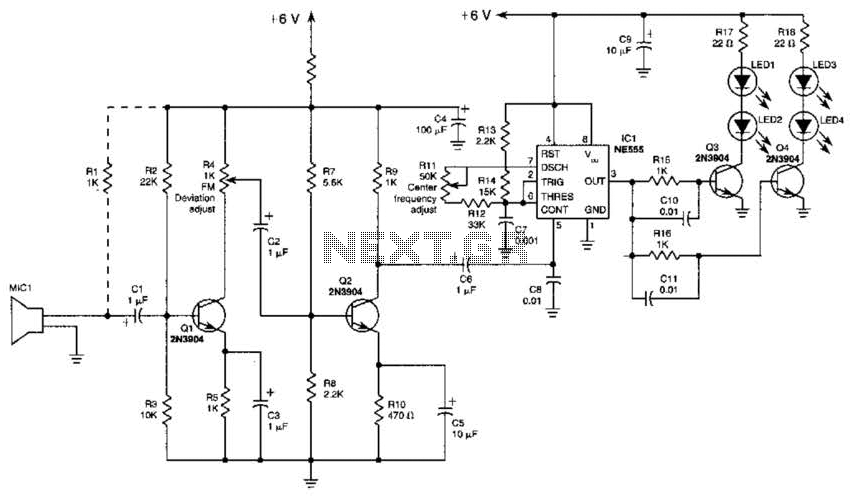
This transmitter employs a two-stage amplifier configuration using transistors Q1 and Q2 to frequency modulate an NE555 timer, which is set up as a voltage-controlled oscillator (VCO) operating at approximately 50 kHz. The resulting frequency-modulated pulse train is transformed into light pulses through LEDs LED1 to LED4, which are driven by transistors Q3 and Q4.
The circuit begins with the NE555 timer configured in astable mode to function as a VCO. The frequency of the output signal can be adjusted by varying the resistors and capacitors connected to the timer. The two-stage amplifier, comprising Q1 and Q2, amplifies the modulating signal before it is fed into the NE555 timer. This ensures that the modulation is strong enough to produce a detectable output at the desired frequency.
Transistors Q1 and Q2 are typically configured in a common-emitter arrangement, providing both voltage gain and current gain. The output from the second stage is connected to the control voltage input of the NE555, allowing for effective frequency modulation. The modulation index can be adjusted by changing the amplitude of the input signal, which directly influences the deviation of the carrier frequency.
The output from the NE555 is a pulse train that varies in frequency based on the modulating signal. This pulse train is then utilized to drive a series of light-emitting diodes (LED1 to LED4). Transistors Q3 and Q4 serve as drivers for the LEDs, allowing them to handle higher current levels than what the NE555 can provide directly. This configuration ensures that the LEDs can operate efficiently and produce a visible light output.
The entire assembly is suitable for applications in optical communication systems, where the modulated light pulses can be transmitted over distances and detected by photodetectors. The design can be further enhanced by incorporating additional stages for improved modulation depth or by using different types of LEDs for varying wavelengths of light. This transmitter uses two-stage amplifier Q1/Q2 to frequency modulate an NE555 (configured as a VCO) operating at about 50 kHz. The resultant FM-modulated pulse train is converted to light pulses via LED1 through LED4, driven by Q3 and Q4. 🔗 External reference
The circuit begins with the NE555 timer configured in astable mode to function as a VCO. The frequency of the output signal can be adjusted by varying the resistors and capacitors connected to the timer. The two-stage amplifier, comprising Q1 and Q2, amplifies the modulating signal before it is fed into the NE555 timer. This ensures that the modulation is strong enough to produce a detectable output at the desired frequency.
Transistors Q1 and Q2 are typically configured in a common-emitter arrangement, providing both voltage gain and current gain. The output from the second stage is connected to the control voltage input of the NE555, allowing for effective frequency modulation. The modulation index can be adjusted by changing the amplitude of the input signal, which directly influences the deviation of the carrier frequency.
The output from the NE555 is a pulse train that varies in frequency based on the modulating signal. This pulse train is then utilized to drive a series of light-emitting diodes (LED1 to LED4). Transistors Q3 and Q4 serve as drivers for the LEDs, allowing them to handle higher current levels than what the NE555 can provide directly. This configuration ensures that the LEDs can operate efficiently and produce a visible light output.
The entire assembly is suitable for applications in optical communication systems, where the modulated light pulses can be transmitted over distances and detected by photodetectors. The design can be further enhanced by incorporating additional stages for improved modulation depth or by using different types of LEDs for varying wavelengths of light. This transmitter uses two-stage amplifier Q1/Q2 to frequency modulate an NE555 (configured as a VCO) operating at about 50 kHz. The resultant FM-modulated pulse train is converted to light pulses via LED1 through LED4, driven by Q3 and Q4. 🔗 External reference
Warning: include(partials/cookie-banner.php): Failed to open stream: Permission denied in /var/www/html/nextgr/view-circuit.php on line 713
Warning: include(): Failed opening 'partials/cookie-banner.php' for inclusion (include_path='.:/usr/share/php') in /var/www/html/nextgr/view-circuit.php on line 713
